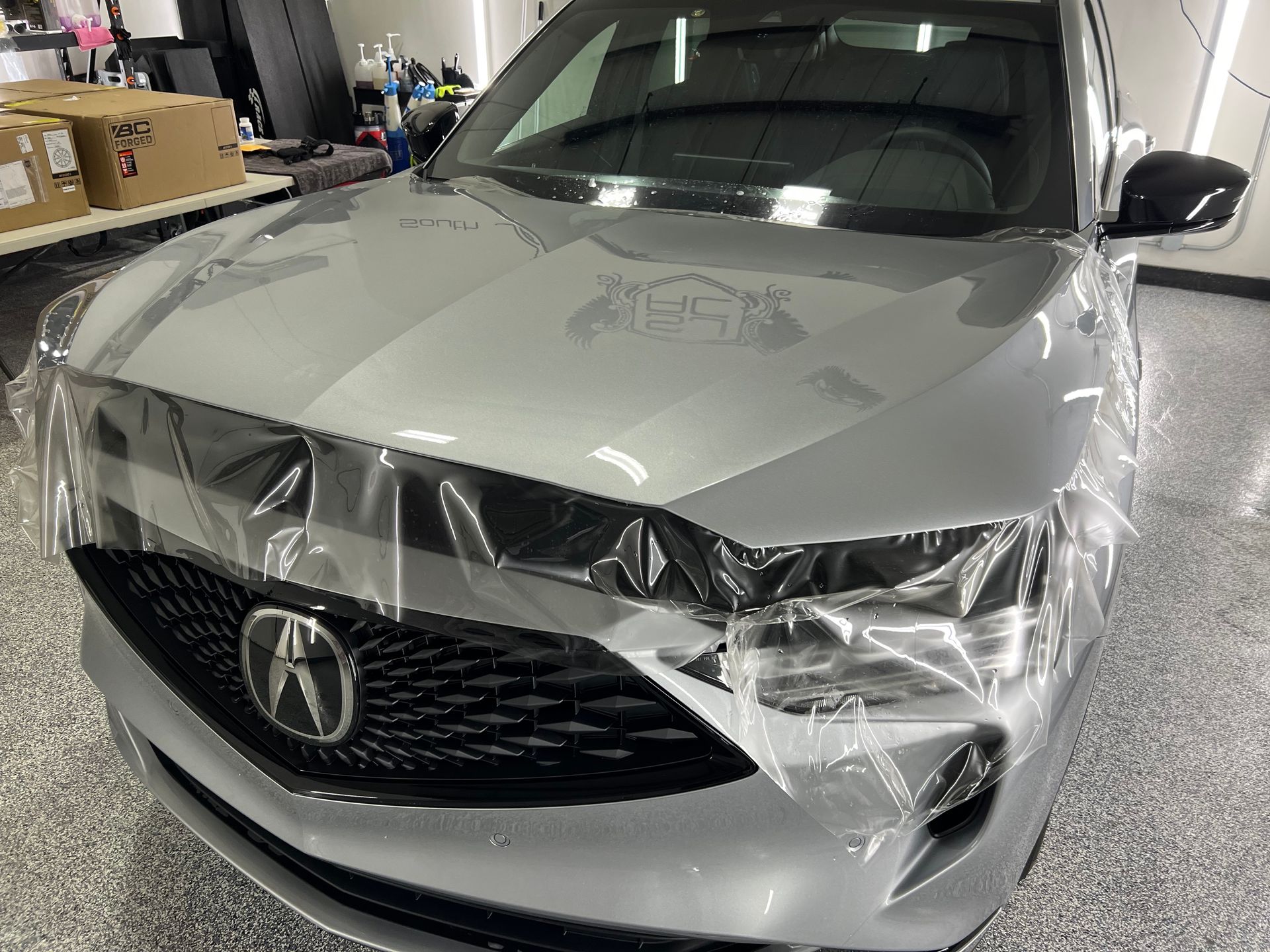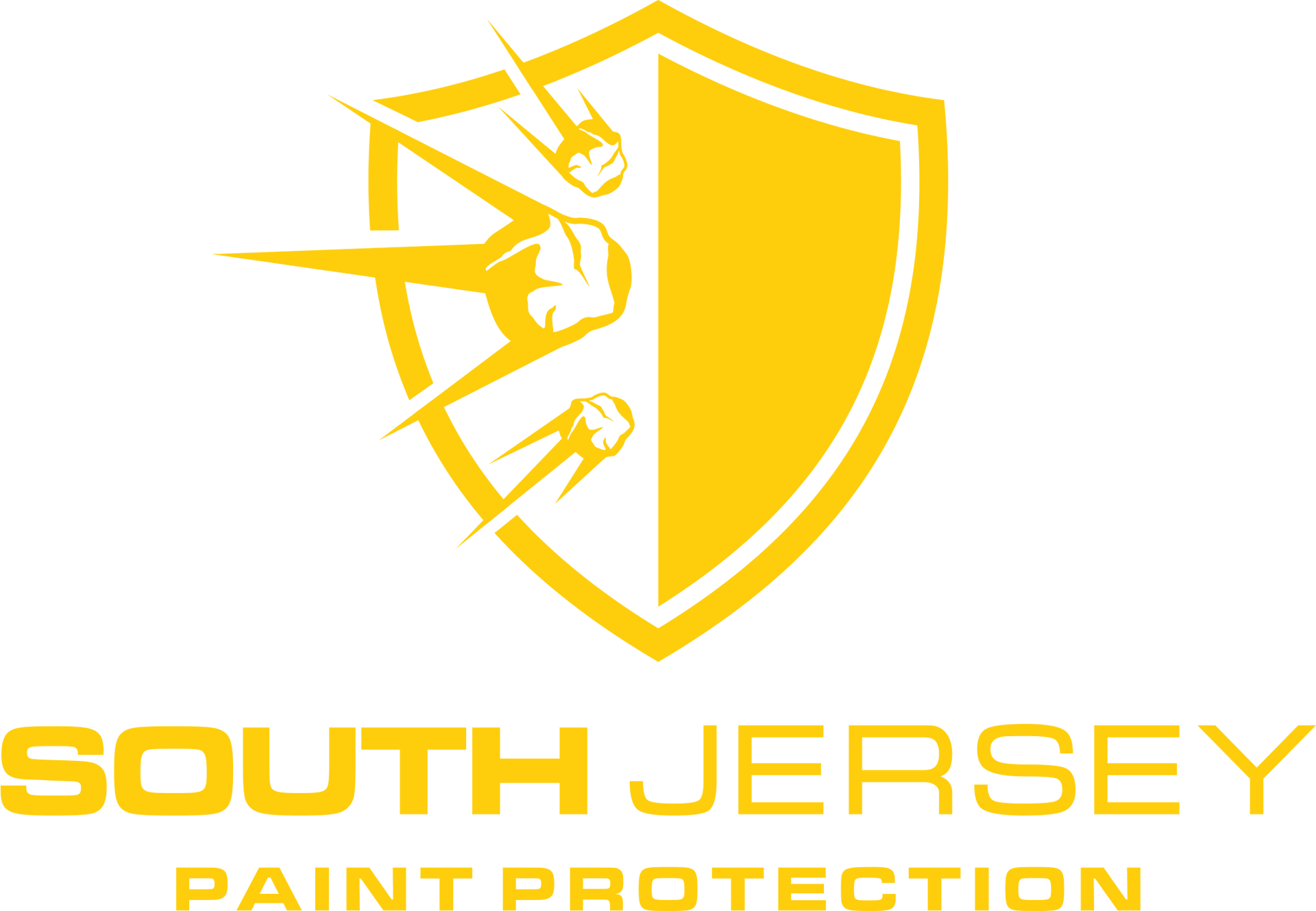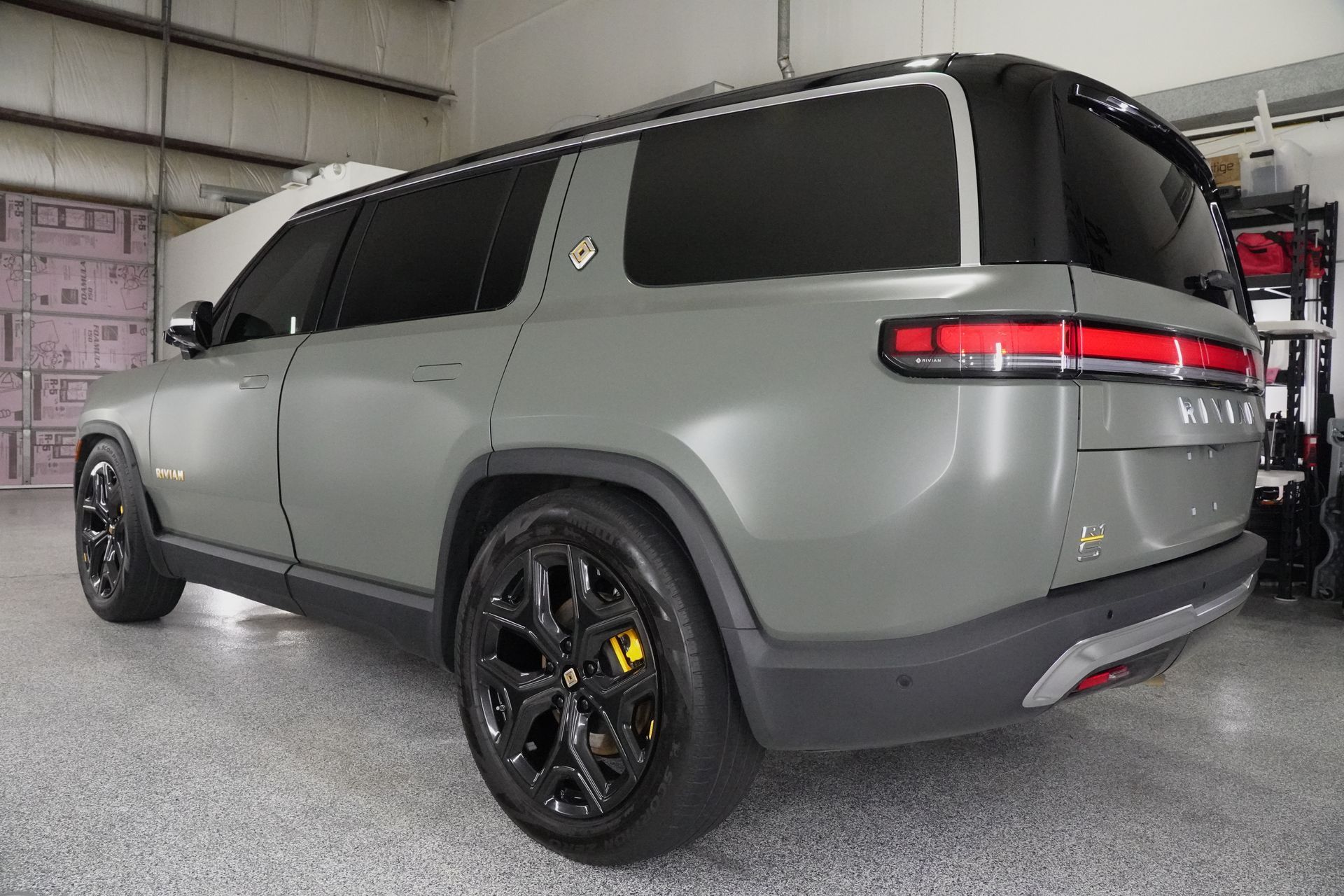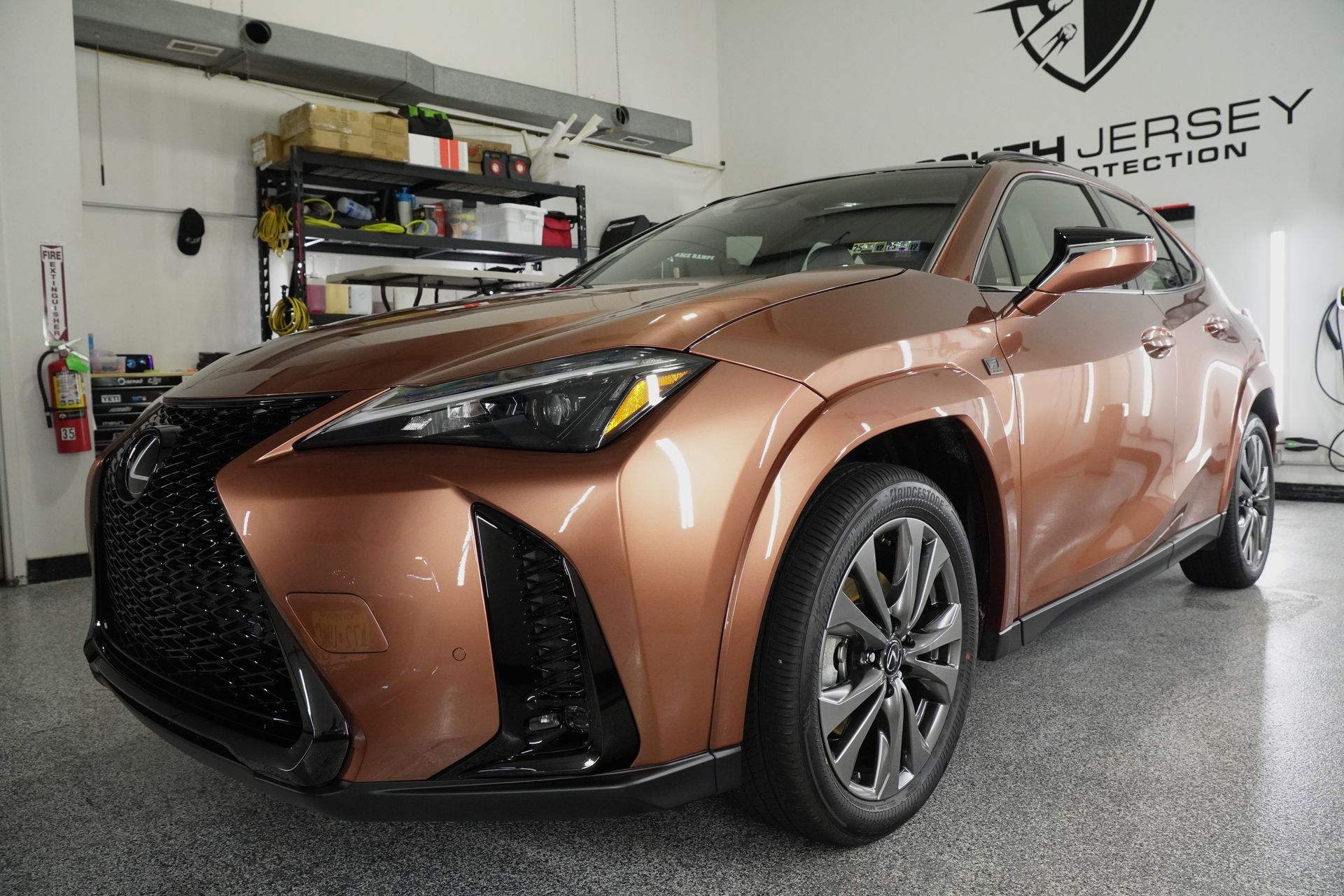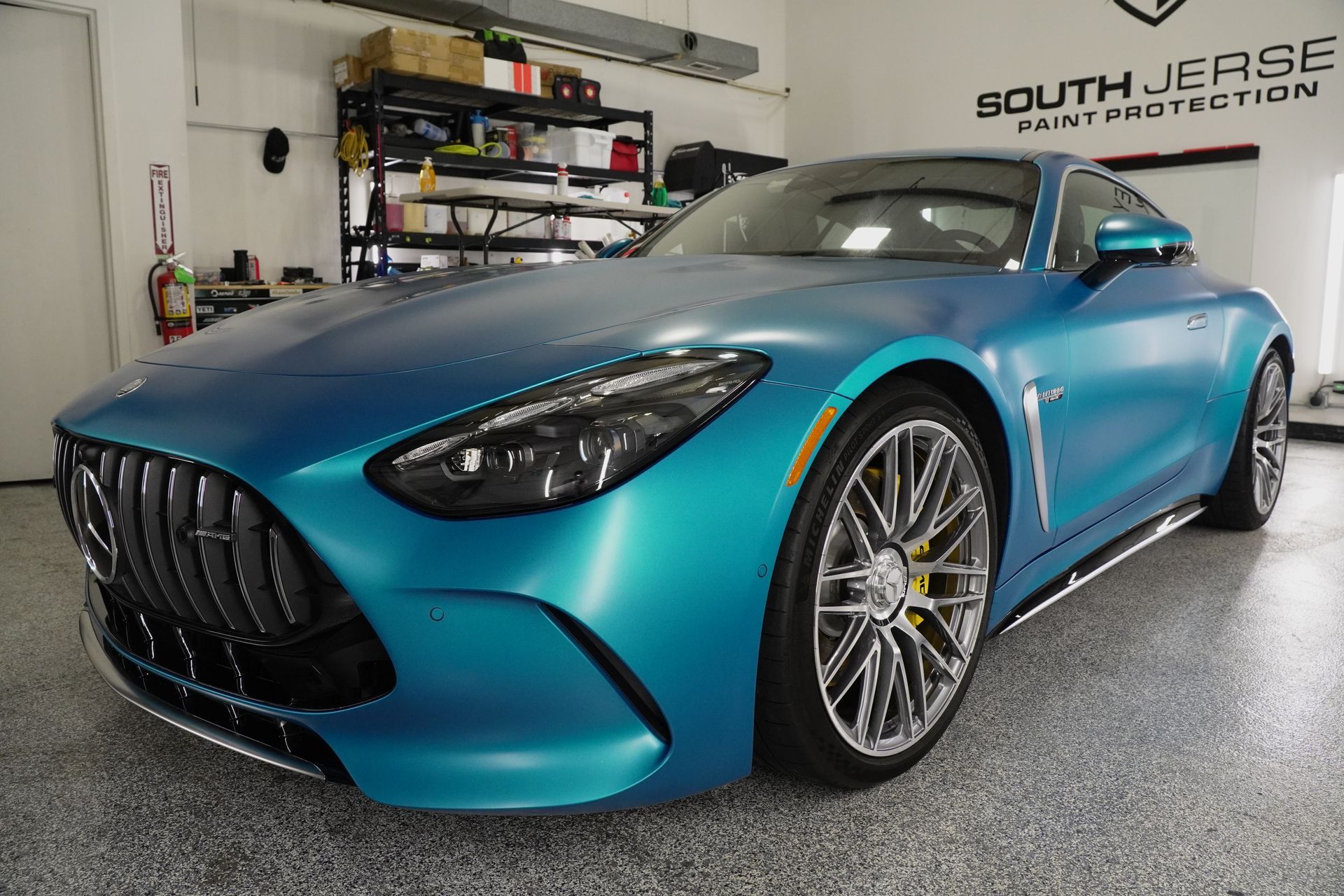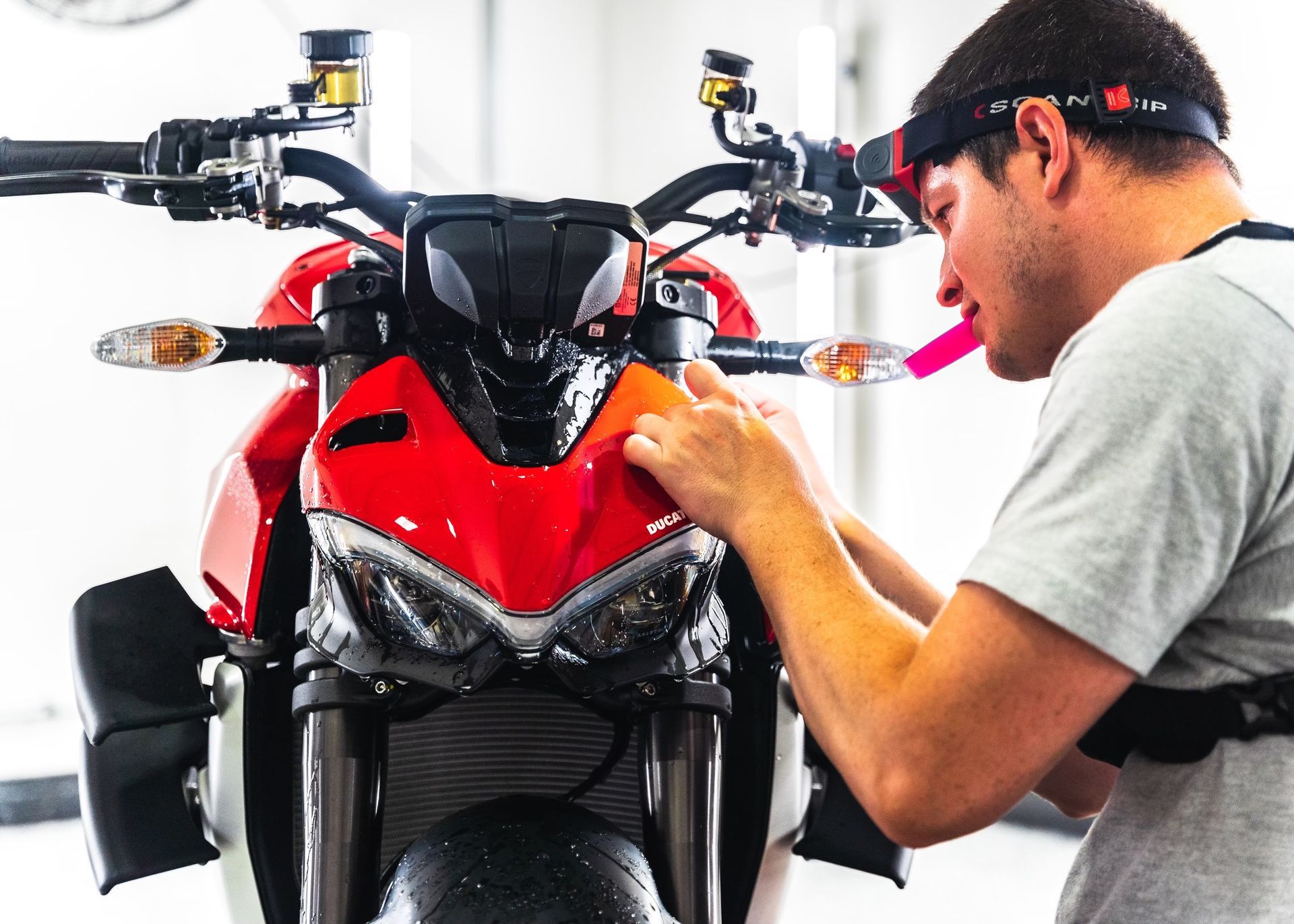
Introduction to Paint Protection Film (PPF)
In the ever-evolving world of automobile care, Paint Protection Film, commonly known as PPF, has emerged as a groundbreaking solution for preserving the aesthetics and integrity of vehicle surfaces. But what exactly is PPF, and how did it become such a pivotal component in automotive maintenance?
At its core, PPF is a transparent, thermoplastic urethane film. Its primary function is to shield a vehicle's paint from external factors like road debris, minor scratches, bird droppings, and the harmful effects of ultraviolet rays. The genius of PPF lies in its simplicity. While invisible to the naked eye when properly applied, this protective layer acts as a barrier, ensuring that the paint underneath remains pristine and untainted.
The origins of PPF trace back to the military realm. During the Vietnam War era, the U.S. Department of Defense sought solutions to protect helicopter rotor blades and other sensitive parts from flying shrapnel and debris. The initial versions of PPF were born out of this necessity. With time, its benefits became evident beyond the confines of the battlefield. The automotive industry recognized the potential of this protective film, leading to adaptations tailored specifically for cars.
From its early inception in military applications, PPF has undergone several refinements to cater to the nuanced needs of modern vehicles. Today, it's not just about protecting against physical abrasions; the film also provides a defense against chemical stains and etching caused by various contaminants.
The beauty of PPF extends beyond its protective qualities. It allows vehicles to maintain their original shine and luster without altering the appearance of the paint. It's like equipping your car with an invisible shield, working round-the-clock to fend off potential threats to the paintwork.
Paint Protection Film represents a fusion of necessity and innovation. Its journey from military use to mainstream automotive care underscores its effectiveness and adaptability. As vehicle owners increasingly seek solutions to protect their investments and maintain the aesthetics of their cars, PPF stands out as a trusted ally in this endeavor.
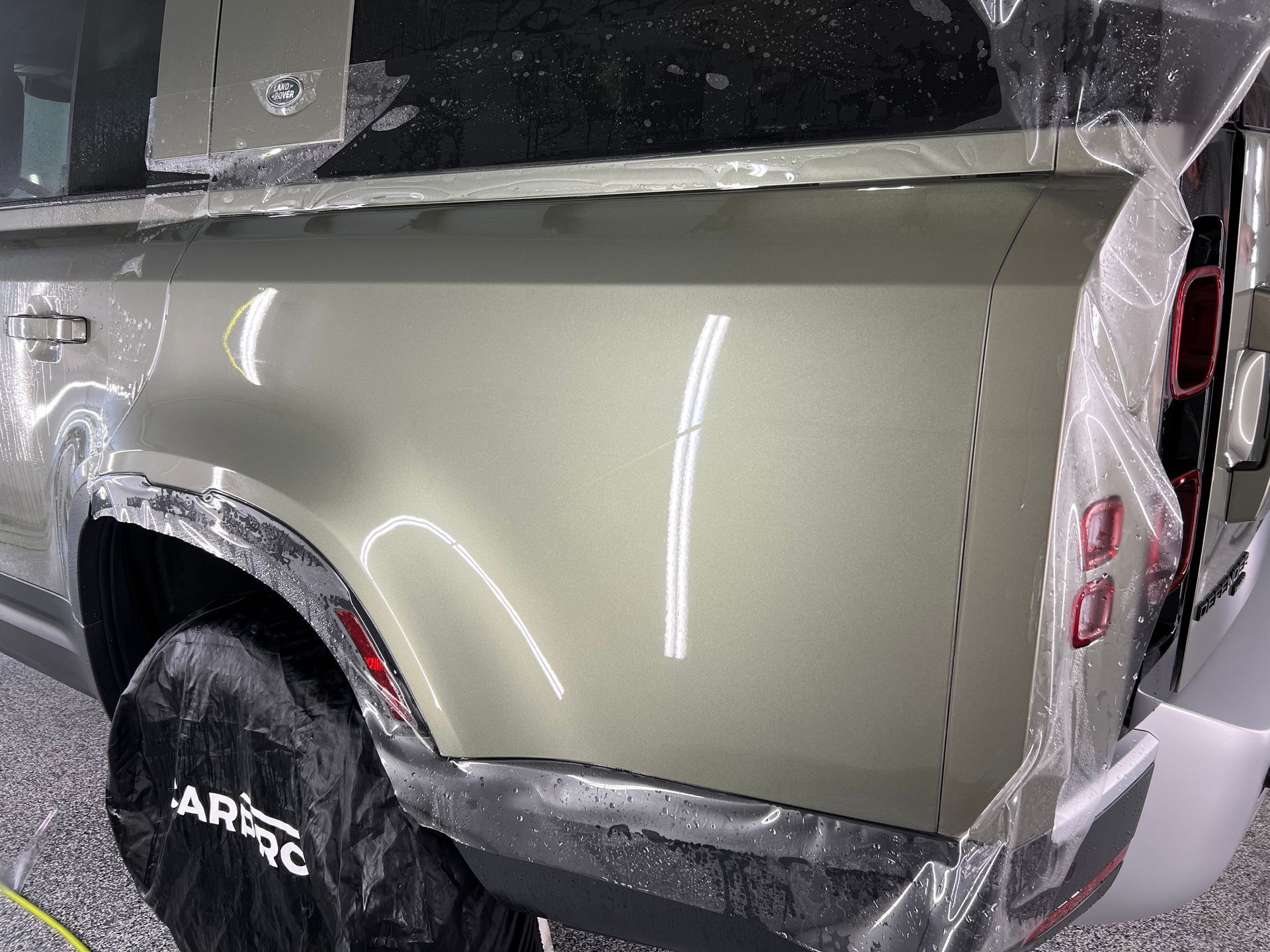
Different Names, Same Protection: Understanding PPF Terminology
In the automotive world, terminology can often be a source of confusion. When it comes to protecting a vehicle's exterior, various terms float around, with some of them referring to the same protective solution, albeit under different names. One of the prime examples is Paint Protection Film (PPF). Here's a breakdown to help demystify the terminology surrounding this protective marvel.
Paint Protection Film (PPF): This is the most widely recognized term, describing a thin, clear, or tinted film applied to a vehicle's surface. As the name suggests, its primary function is to protect the paint from external elements and potential damage, ensuring that the car maintains its pristine appearance for a more extended period.
Clear Bra: Historically, vehicle owners used a black or colored "bra" on the front of their cars to protect against rock chips. As technology advanced, this evolved into a transparent version, leading to the term "clear bra." Essentially, it's another name for PPF, emphasizing the film's transparent nature, which allows the vehicle's original paint color to shine through unhindered.
Stone Guard: Some enthusiasts and professionals refer to PPF as a "stone guard." This name underscores one of the primary functions of the film: protecting the vehicle's exterior from stone chips and road debris that can cause unsightly damage. It’s a more functionally descriptive term, highlighting the protective attributes of the film against common road threats.
Clear Wrap: Drawing parallels with vinyl wraps that change a vehicle's appearance, PPF is sometimes termed "clear wrap." While vinyl wraps focus on aesthetics, a clear wrap (or PPF) prioritizes protection, all while being virtually invisible to the naked eye.
Protective Film or Protective Wrap: These terms are straightforward descriptors, emphasizing the film's core purpose. It's a protective layer, a shield that wraps around the vehicle's vulnerable areas to fend off potential damages.
While the myriad of names might seem confusing initially, they all point to a singular product designed with the same intent: safeguarding a vehicle's paint. It's essential for consumers, especially those new to the realm of automotive protection, to recognize these terms as synonymous. This awareness can aid in informed decision-making, ensuring they receive the protection they seek without getting tangled in the web of terminology.
Whether it's called a clear bra, stone guard, or any other name, the goal remains consistent: offering vehicles superior protection against everyday threats. Understanding this ensures that vehicle owners can navigate the world of automotive care with clarity and confidence.
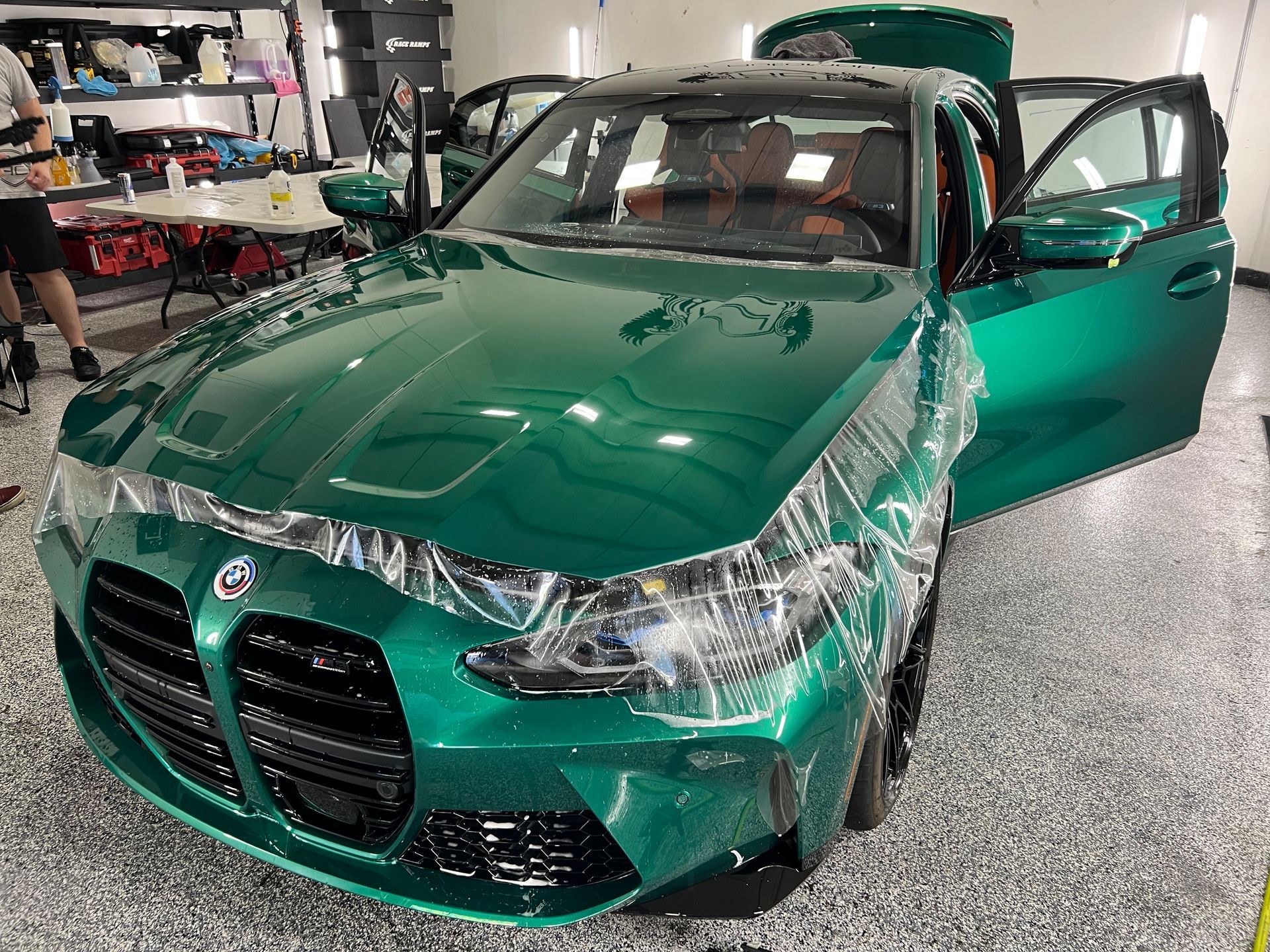
The Science Behind PPF: How Does it Work?
The automotive industry, while often seen as a realm of design and engineering, also delves deeply into the world of science, especially when it comes to preserving a car's aesthetics. Paint Protection Film (PPF) stands as a testament to this intersection of technology and science. But how exactly does this thin layer of film provide such robust protection? Let's unravel the science behind PPF.
Composition and Material: At its core, PPF is typically made from a thermoplastic urethane material. This compound is known for its strength, elasticity, and clarity. The urethane-based film is resistant to abrasions, corrosion, and acidic contaminants, ensuring that harmful elements don't reach the paint beneath.
Self-healing Properties: One of the marvels of modern PPF is its self-healing capability. The top layer of the film contains elastomeric polymers that return to their natural shape after being stretched or disfigured. This means that minor scratches or swirls on the surface can "heal" on their own when exposed to heat, be it from sunlight or a hot water rinse.
UV Protection: PPF acts as a shield against harmful ultraviolet (UV) rays. The film's structure is such that it filters out these rays, preventing them from reaching the paint. This is crucial in preventing paint oxidation and fading, ensuring that the vehicle retains its vibrant color for longer.
Adhesive Layer: Beneath the protective exterior of the PPF is a strong adhesive layer, allowing the film to bond seamlessly with the vehicle's paint. This adhesive is designed not only to grip the paint securely but also to be removable without leaving residue or causing damage, striking a balance between protection and adaptability.
Hydrophobic Effect: Advanced versions of PPF come with hydrophobic properties, ensuring that water droplets bead up and roll off the surface. This is not just about keeping the car looking clean; it ensures that waterborne contaminants, dirt, and grime don't get a chance to settle, reducing potential damage and making cleaning easier.
Flexibility and Stretch: The elastomeric nature of PPF allows it to be stretched and molded to fit the contours of any vehicle perfectly. This ensures comprehensive coverage without seams or gaps, providing uniform protection across the car's surface.
Paint Protection Film is a culmination of advanced material science and practical application. Its multi-layered structure, designed with precision and purpose, provides vehicles with a protective barrier that's both effective and barely noticeable. PPF showcases how science, when directed towards protection and preservation, can yield solutions that elevate the vehicle ownership experience.
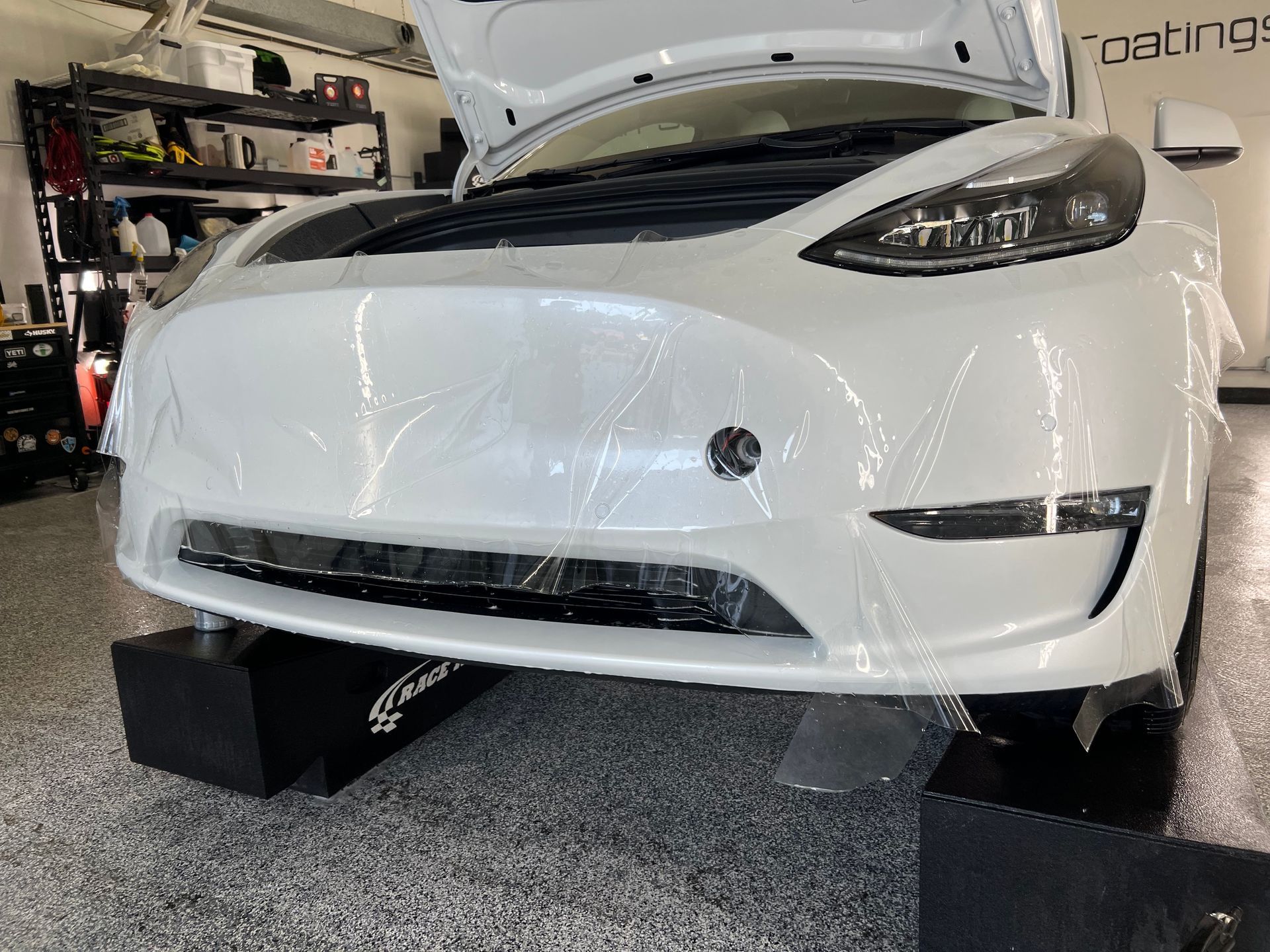
Benefits of Installing PPF on Your Vehicle
The realm of automotive care has seen numerous innovations over the years, with each aiming to enhance the longevity and aesthetics of vehicles. Among these advancements, Paint Protection Film (PPF) stands out, offering a comprehensive protective solution for car enthusiasts and everyday drivers alike. Let's explore the multifaceted benefits of installing PPF on your vehicle.
Enhanced Paint Protection: At its core, PPF serves as a formidable barrier against potential hazards. Whether it's minor stone chips from the road, abrasive dirt, or accidental scrapes in parking lots, the film absorbs and deflects these threats, ensuring the paint beneath remains untouched.
Preservation of Resale Value: The appearance of a vehicle plays a significant role in its resale value. A car with well-maintained paintwork, devoid of dings, scratches, and discolorations, will naturally command a higher market price. PPF helps in maintaining this pristine condition, making it a wise investment for the future.
Reduced Maintenance Efforts: With PPF's hydrophobic properties, water and contaminants slide off with ease, simplifying the cleaning process. This means fewer washes, less effort, and reduced usage of potentially harmful cleaning chemicals, saving both time and resources.
UV Ray Shielding: Harmful ultraviolet rays can deteriorate a car's paint, leading to fading and oxidation. PPF acts as a sunblock for your vehicle, filtering out these detrimental rays and ensuring that the vibrancy and shine of the paint are preserved.
Self-healing Magic: Modern PPFs come equipped with self-healing properties. Minor scratches or scuffs on the film's surface magically disappear when exposed to heat, ensuring the vehicle retains its flawless appearance with minimal intervention.
Economic Sense: While there's an upfront cost associated with PPF installation, the long-term financial benefits are compelling. By minimizing the need for paint touch-ups, repairs, or even entire repaints, the film can lead to significant savings over the vehicle's lifespan.
Aesthetic Appeal: A vehicle coated with PPF often has a glossy, polished appearance. This added shine accentuates the vehicle's contours and color, enhancing its overall visual appeal.
Peace of Mind: Beyond the tangible benefits, there's an undeniable peace of mind that comes with knowing your vehicle is protected. Whether cruising on the highway or navigating crowded city streets, the assurance that your car's paint is shielded from unforeseen damages is comforting.
The advantages of PPF extend beyond mere surface-level protection. It's a holistic approach to vehicle care, blending cutting-edge technology with practical benefits. For those seeking to maintain their vehicle's aesthetics, enhance its longevity, and safeguard their investment, PPF emerges as an invaluable ally on the road.

Importance of PPF in the Delaware Valley and Philadelphia Region
The Delaware Valley and Philadelphia Region, characterized by its vibrant urban landscapes, historical landmarks, and bustling roadways, offers a unique driving experience. While the area is steeped in charm and history, it also presents particular challenges for vehicle owners. This is where the value of Paint Protection Film (PPF) becomes abundantly clear. Let's delve into why PPF is especially vital for those navigating the roads of this iconic region.
Varied Climate Challenges: The Delaware Valley experiences a range of weather conditions, from snowy winters to warm summers. Such variations can be taxing on a vehicle's paintwork. Salt from winter roads, for instance, can corrode and damage the paint. PPF acts as a resilient barrier, shielding vehicles from the adverse effects of seasonal elements.
Busy Urban Environment: Philadelphia, the heart of the region, is teeming with activity. Busy streets mean more chances of accidental bumps, scrapes, and the inevitable fallout from construction sites. With PPF, vehicle owners can navigate these streets with an added layer of protection, reducing potential damages from urban hazards.
Preservation of Historical Aesthetics: Many residents in the area own classic or vintage cars, aligning with the historical essence of the region. PPF is crucial for such vehicles, ensuring that their timeless beauty remains untarnished by modern-day threats.
Economic Benefits: The Philadelphia Region is known for its thriving businesses and dynamic economic landscape. For many professionals, a vehicle isn't just a mode of transportation; it's a representation of their brand. Maintaining its pristine appearance through PPF can make a positive impression, indirectly benefiting one's professional image.
Diverse Road Conditions: From the coastal roads of the Delaware Valley to the urban streets of Philadelphia, drivers encounter a myriad of road conditions. Gravel, debris, and even occasional road maintenance can pose threats to a vehicle's exterior. PPF offers a consistent protective layer, irrespective of where one's journey takes them.
Community Emphasis on Sustainability: The Delaware Valley and Philadelphia community is progressively leaning towards eco-friendly practices. PPF aligns with this ethos by reducing the frequency of car washes and the need for chemical cleaning agents, contributing to a greener environment.
Increased Longevity: Given the investment in vehicles, especially luxury or custom models popular in the region, owners seek solutions that enhance longevity. PPF not only protects but also extends the life of the paintwork, ensuring that vehicles remain in top condition for longer.
In the diverse and dynamic backdrop of the Delaware Valley and Philadelphia Region, PPF emerges as more than just a protective accessory. It's a strategic investment, tailored to the unique challenges and aspirations of the area. For those who cherish their vehicles and the journeys they embark on in this storied region, PPF is an indispensable companion.
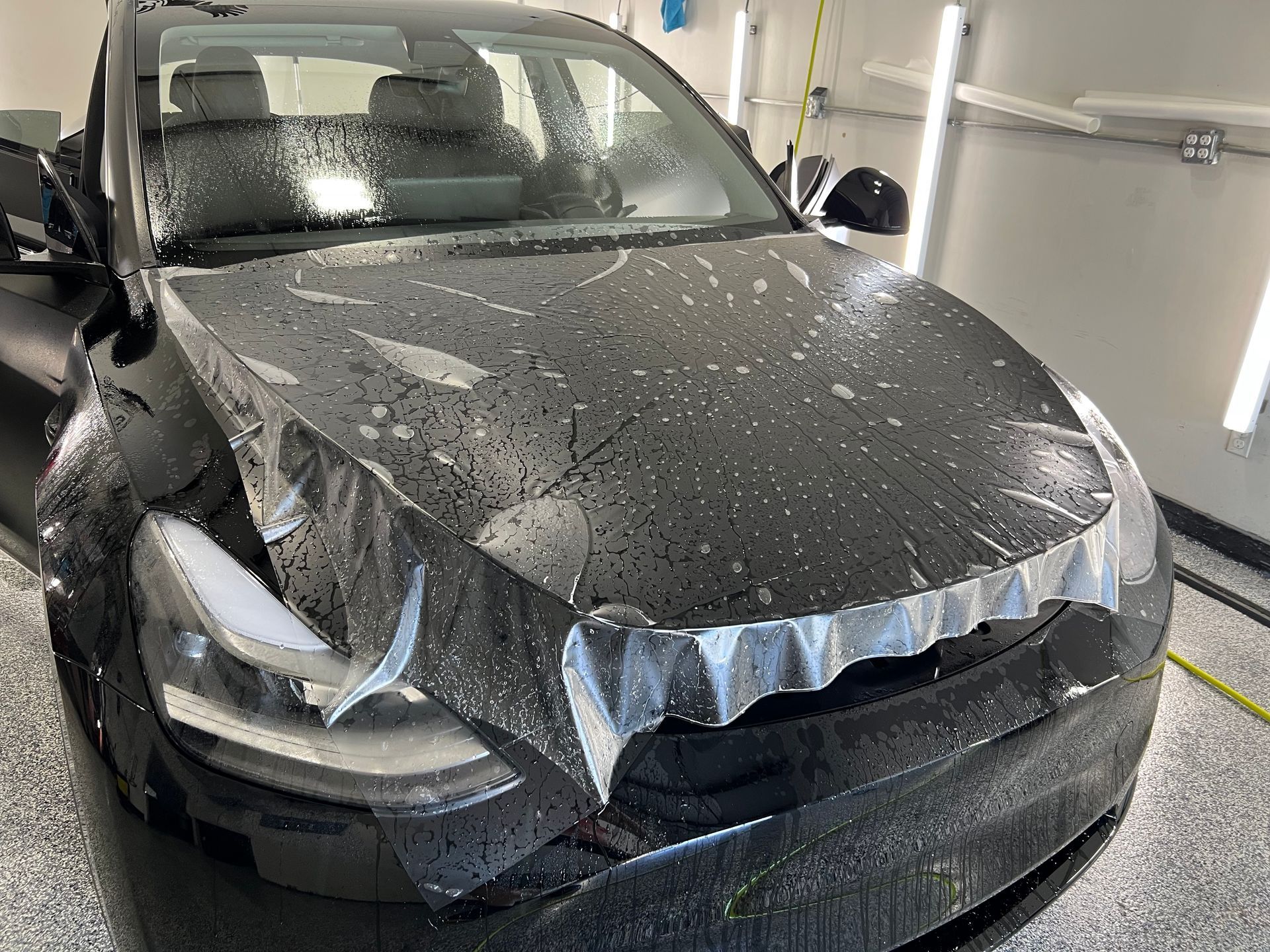
The Application Process: What to Expect
Deciding to invest in Paint Protection Film (PPF) for your vehicle is a commendable step towards preserving its appearance and value. For many, the decision is straightforward, but the application process can seem a bit nebulous. Let's demystify the procedure, providing clarity on what you can expect when you decide to take the PPF plunge.
Consultation and Assessment: Before diving into the application, it's essential to consult with professionals who can assess your vehicle's specific needs. This initial conversation often includes discussing the areas of the car you want to be covered, the types of PPF available, and any customization requests.
Vehicle Preparation: The success of PPF lies in its seamless integration with the car's paint. As such, thorough preparation is crucial. This phase involves cleaning the vehicle meticulously, ensuring no dirt, debris, or contaminants could come between the paint and the film. Any existing minor scratches or imperfections are also often addressed to guarantee a flawless finish.
Custom Cutting: Modern PPF application benefits from computer-assisted design. Depending on the chosen provider, they may use a database with vehicle-specific patterns to cut the film accurately. This precision ensures that the PPF fits your vehicle's contours and edges perfectly, eliminating the need for on-car trimming which can risk damaging the paint.
Film Application: With the vehicle prepped and the film ready, the actual application begins. The process requires skill, as technicians ensure no air bubbles or imperfections mar the finish. Using a slip solution, they'll position the film, squeegee out any solution or air underneath, and allow the adhesive side of the film to bond securely to the vehicle's paint.
Drying and Curing: Once applied, the PPF needs time to dry and cure. While initial bonding happens quickly, the complete curing process can take several days. During this period, it's advised to avoid washing the car or exposing it to extreme environmental conditions.
Final Inspection: After the film has settled, a final inspection ensures everything is in order. This check ensures no edges are lifting, no bubbles have formed, and the film's clarity is consistent.
Aftercare Guidance: After the application, professionals often provide guidance on maintaining the PPF. This includes cleaning recommendations, what products to avoid, and how to best preserve the film's integrity and appearance.
The PPF application process, while intricate, is streamlined to ensure optimal results. A blend of skill, technology, and attention to detail ensures that your vehicle gets the protection it deserves. When handled by experts, you can expect a transformation that’s not just protective but also aesthetically enhancing, allowing your car to shine in all its glory.
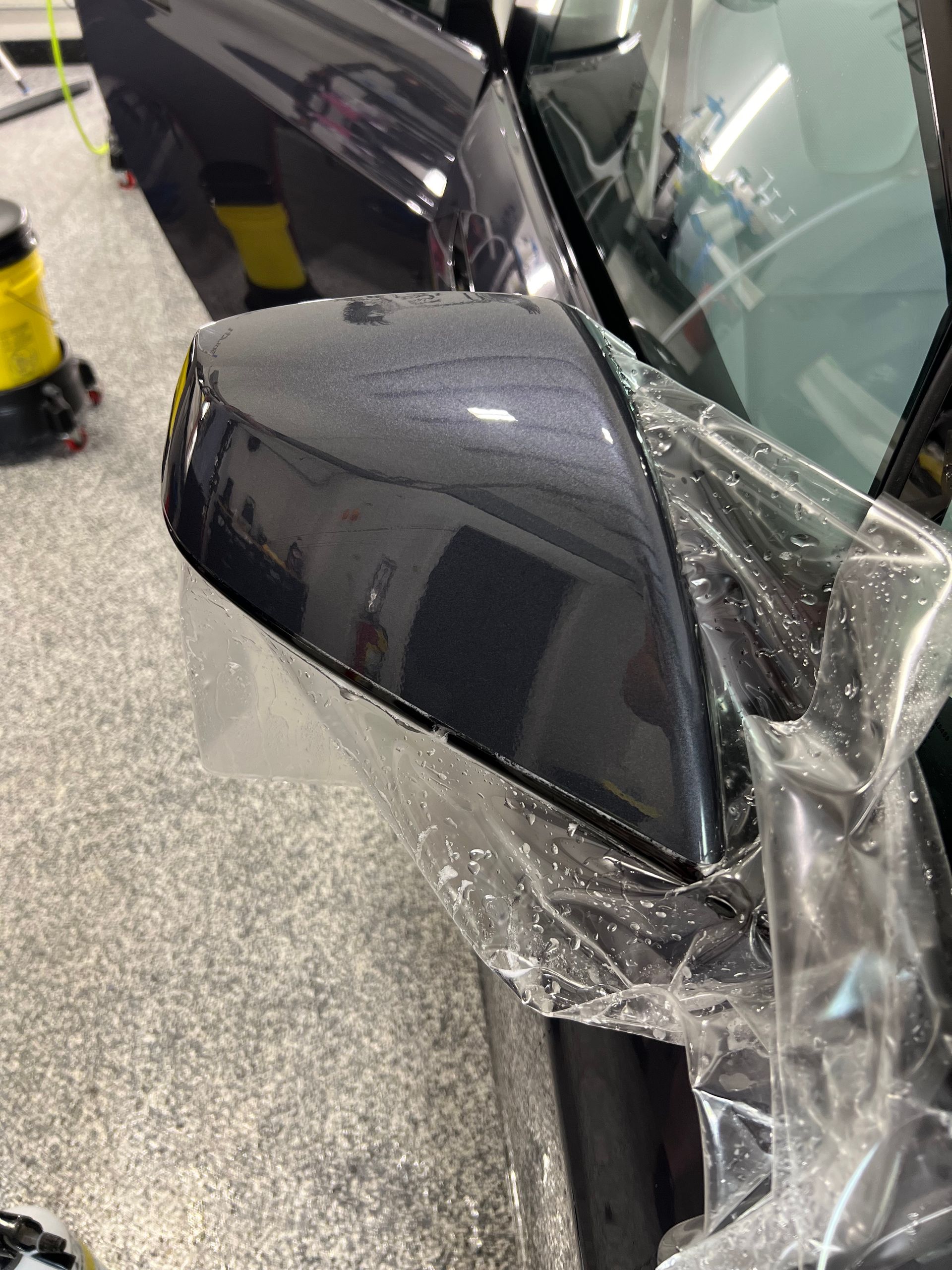
PPF vs. Alternatives: Making an Informed Decision
When it comes to automotive protection, vehicle owners are presented with a plethora of options. Paint Protection Film (PPF) stands as a popular choice, but how does it compare with its alternatives? Understanding the pros and cons of each can help car enthusiasts and everyday drivers alike make informed decisions tailored to their needs.
PPF vs. Ceramic Coating: Ceramic coatings have gained traction for their ability to provide a glossy finish while offering protection against minor scratches, UV rays, and contaminants. However, PPF offers a thicker barrier, providing a more substantial shield against physical abrasions like stone chips and road debris. While ceramic coatings enhance shine and are hydrophobic, PPF delivers superior protection against impact-related damage.
PPF vs. Car Wax: Traditional car wax provides a temporary solution for enhancing a vehicle's shine and offers some level of protection against contaminants. However, its protection is fleeting, often requiring reapplications every few weeks or months. PPF, on the other hand, is a long-term solution, offering consistent protection that doesn't wear off with time or environmental exposure.
PPF vs. Vinyl Wraps: Vinyl wraps are primarily used for aesthetic purposes, allowing vehicle owners to change their car's appearance without a paint job. While they provide a degree of protection, they lack the self-healing properties and substantial durability inherent to PPF. For those seeking protection over aesthetics, PPF emerges as the clear winner.
PPF vs. Clear Coat: A clear coat is a standard protective layer applied over a vehicle's paint. It provides a glossy finish and offers some level of protection against minor scratches and UV rays. However, its thickness is nowhere close to that of PPF. Thus, in terms of defense against more substantial threats like rock chips, PPF holds an edge.
PPF vs. Paint Sealant: Paint sealants are synthetic products designed to protect a car's paint from contaminants while imparting a shiny finish. They last longer than traditional waxes but still don't match the durability and protection level of PPF.
While the automotive protection market offers an array of options, each with its unique benefits, Paint Protection Film stands out for its comprehensive protection qualities. It's not just about guarding against environmental threats but also ensuring the vehicle's paint remains untouched from more significant challenges like road debris and minor accidents. For vehicle owners prioritizing protection, understanding these differences is pivotal. It empowers them to choose a solution that aligns with their vehicle's needs and their personal preferences, ensuring both satisfaction and peace of mind.
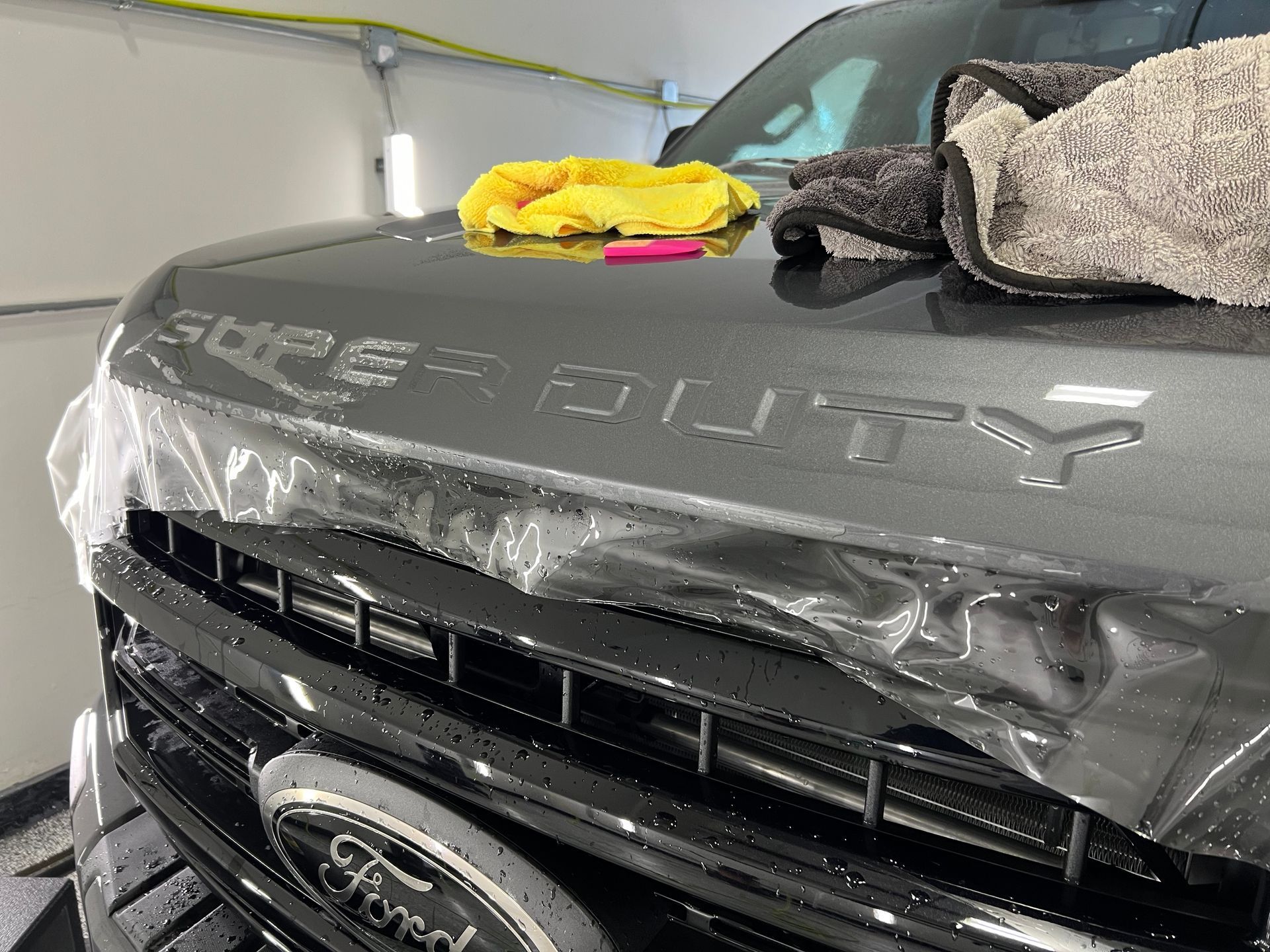
Care and Maintenance for Your PPF
Investing in Paint Protection Film (PPF) is a strategic decision to shield your vehicle from the myriad of external threats it faces daily. However, even with this robust protection, PPF itself requires some care to maintain its pristine condition and ensure longevity. Let’s explore the best practices for looking after your vehicle's protective film.
Regular Cleaning: While PPF offers significant resistance to dirt and contaminants, it's still essential to clean your vehicle regularly. Use a gentle car shampoo and soft mitt or cloth to wipe away dirt, ensuring the surface remains clear and the film's self-healing properties can function optimally.
Avoid Harsh Chemicals: Some cleaning agents contain chemicals that can degrade the PPF over time. Always opt for pH-balanced car wash soaps. If in doubt, consult your PPF provider for recommended products that are safe for use.
Spot Cleaning: For bird droppings, tree sap, or other stubborn contaminants, act swiftly. Left unattended, they can stain or damage the film. Use a mild, diluted soapy water solution and a soft cloth to gently wipe away the residue.
Mind the Edges: When cleaning around the edges or seams of the PPF, be gentle. Aggressive scrubbing or using high-pressure washers too close to the film can potentially cause lifting or peeling at the edges.
Annual Check-ups: It's a good practice to have your PPF inspected by professionals annually. They can check for signs of wear, potential lifting at the edges, or any other issues that might need addressing.
Protection from Extremes: While PPF is designed to handle a range of environmental conditions, if your vehicle is often exposed to extreme sunlight or cold, consider additional protective measures. Parking in shaded areas or using a car cover can extend the life of the PPF.
Waxing and Sealants: If you're considering waxing your vehicle, ensure the product is compatible with PPF. Some waxes can cause discoloration or diminish the film's clarity. Ideally, opt for spray waxes or sealants explicitly designed for vehicles with PPF.
Addressing Minor Damages: In case you notice minor scratches or scuffs, remember that many modern PPFs have self-healing properties. Exposing the affected area to sunlight or gently pouring warm water can often cause the film to heal itself. However, deeper cuts or significant damages might require professional attention.
While Paint Protection Film offers robust protection for your vehicle, a little proactive care ensures it continues to serve its purpose effectively. By following these maintenance guidelines, you not only preserve the integrity of the film but also ensure that your vehicle remains in impeccable condition, reflecting the care and attention it receives.
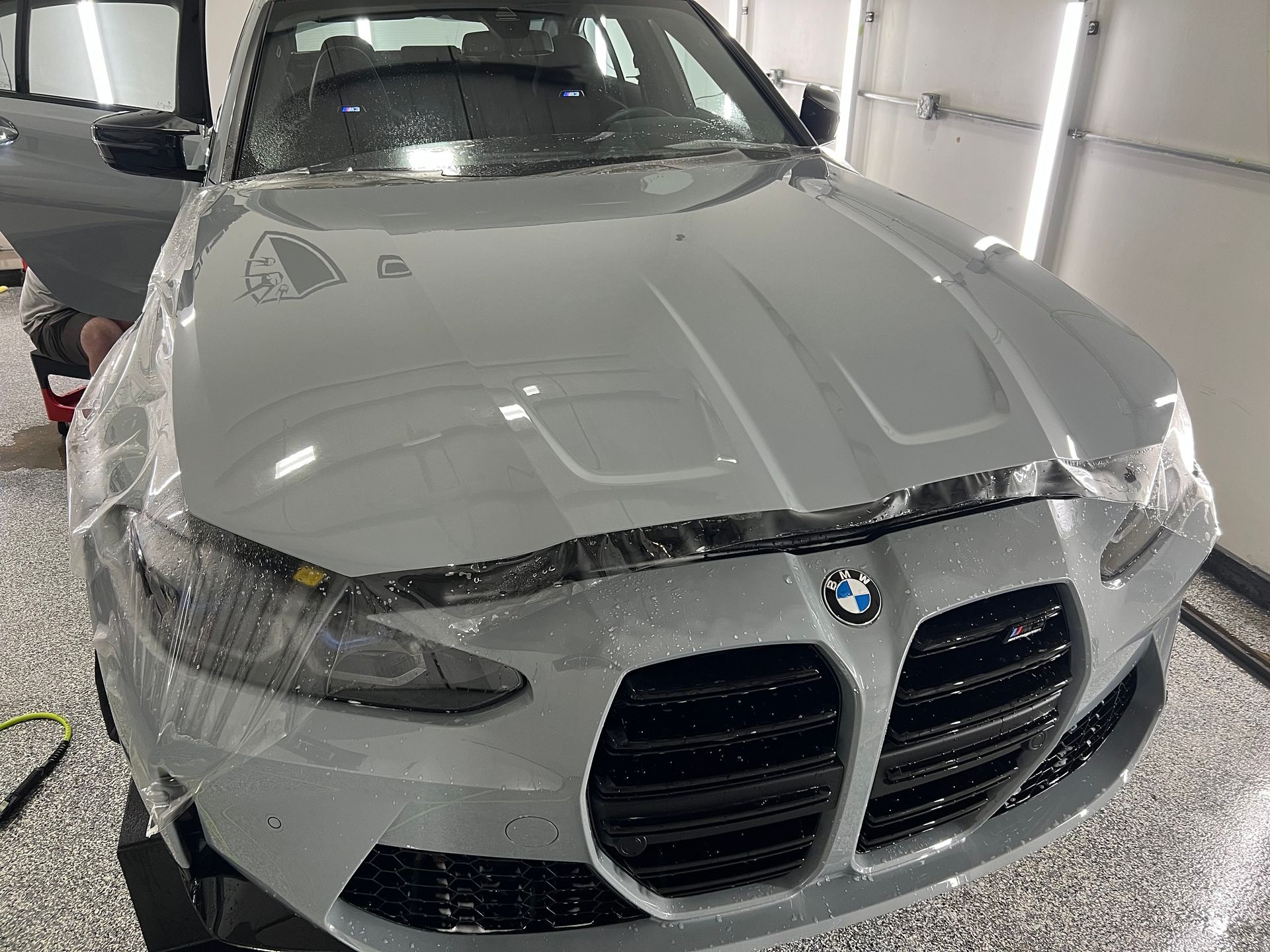
Debunking Myths about Paint Protection Film
The automotive world is rife with misconceptions, and Paint Protection Film (PPF) is no exception. As PPF gains popularity among discerning vehicle owners, it's essential to differentiate between fact and fiction. Here, we'll address some common myths surrounding PPF and set the record straight.
"PPF is Just an Overpriced Sticker": While PPF might resemble a mere sticker, it's vastly different in material, function, and design. Crafted from durable urethane materials, PPF is scientifically developed to provide a robust shield against various environmental hazards, a promise a mere sticker can't uphold.
"PPF Diminishes the Car's Shine": Some believe that applying PPF might dull the car's natural shine. In reality, high-quality PPF is virtually transparent, allowing the vehicle's original luster to shine through. Moreover, with proper maintenance, it can even enhance the car’s overall appearance.
"It's a Lifetime Solution": While PPF offers long-lasting protection, it's not permanent. Over time, wear and tear can affect its performance. However, with good care, many films last upwards of a decade, making them a cost-effective solution for extended protection.
"All PPFs are Created Equal": Not all paint protection films are the same. Variations in thickness, adhesive quality, clarity, and other factors can significantly influence performance. It's crucial to choose a reputable brand and installer to ensure you're getting the best protection for your investment.
"PPF Self-Heals Any Damage": While many modern PPFs have self-healing properties, there are limits. They can recover from minor scratches or blemishes, often with exposure to heat, but more profound damages might require professional intervention or replacement.
"It's Only for Luxury or Sports Cars": While PPF is popular among luxury car owners, its benefits apply to vehicles of all types and values. From family sedans to SUVs, any vehicle owner keen on maintaining their car's appearance and resale value can benefit from PPF.
"Application is a DIY Task": Some might believe applying PPF is as simple as affixing a sticker. The reality is, it requires precision, expertise, and the right tools to ensure a bubble-free, seamless fit. Professional installation guarantees the film's efficacy and the vehicle's aesthetic appeal.
"PPF Turns Yellow Over Time": Quality PPFs are designed to resist discoloration. While inferior films might yellow with age, reputable brands and correctly installed films maintain their clarity, ensuring your vehicle's color remains true.
As with any product, understanding the genuine attributes and benefits of Paint Protection Film is crucial before making a decision. By debunking these myths, car owners can approach PPF with a clear perspective, recognizing its true potential in vehicle protection and aesthetics.
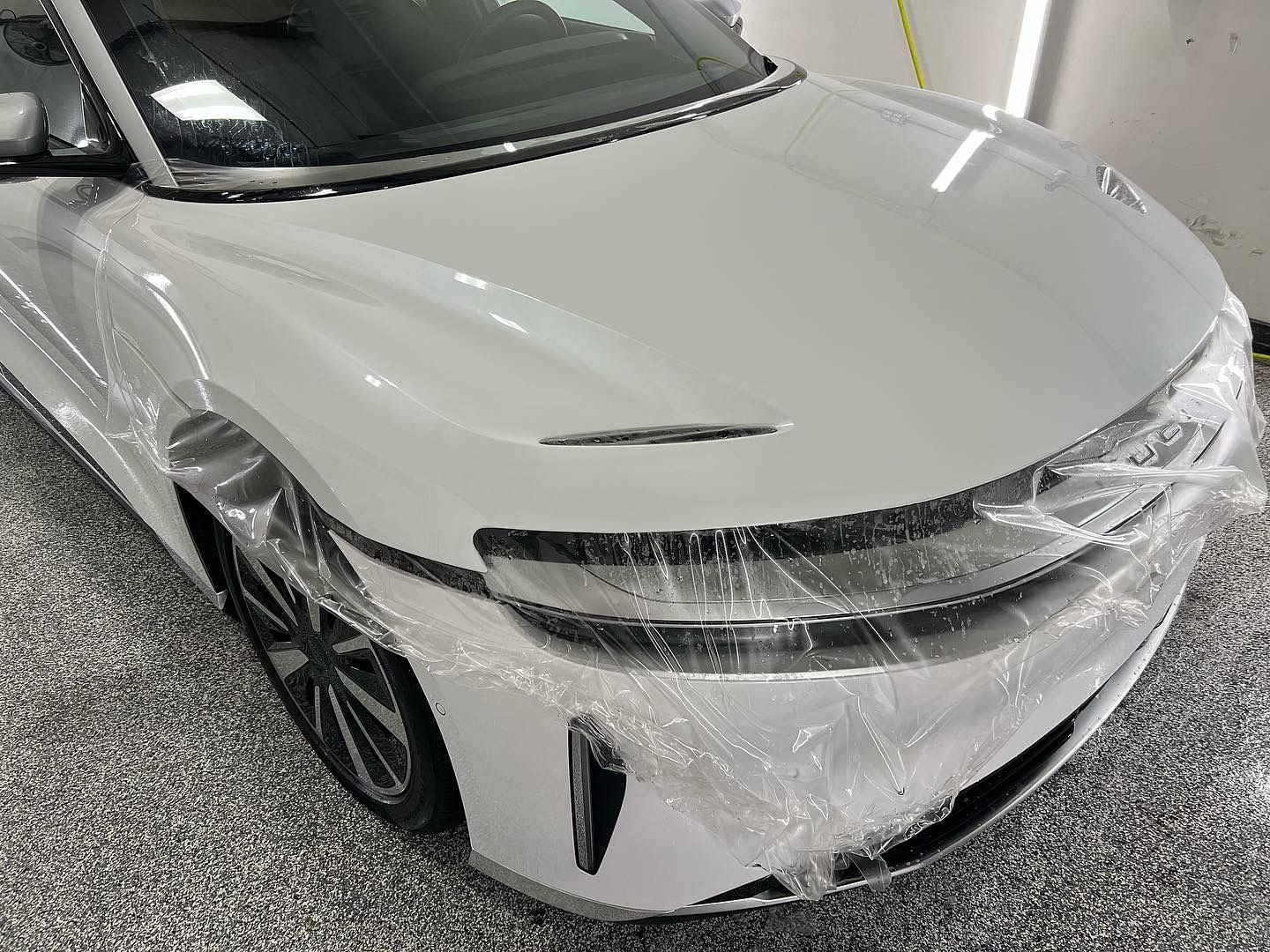
Why South Jersey Paint Protection is the Go-To in New Jersey
In the realm of vehicle care and protection, many establishments offer services, but only a select few stand out as leaders in the industry. South Jersey Paint Protection has established itself as the premier choice for discerning car owners in New Jersey. Let's explore the factors that set this esteemed establishment apart.
Experience and Expertise: The foundation of South Jersey Paint Protection is built on years of hands-on experience. This accumulated knowledge allows the team to navigate the intricacies of each vehicle, ensuring that the application of Paint Protection Film (PPF) is precise and tailored to each car's unique contours.
Quality Commitment: A service is only as good as the materials used. South Jersey Paint Protection prides itself on utilizing top-tier PPF materials. By partnering with industry-leading brands, they ensure that clients receive only the best in vehicle protection.
Customer-Centric Approach: Beyond just offering a service, South Jersey Paint Protection is deeply invested in the customer experience. From initial consultations to aftercare advice, clients are guided at every step, ensuring their needs are addressed and expectations surpassed.
Skilled Technicians: The backbone of any successful establishment is its team. South Jersey Paint Protection boasts a group of skilled technicians who undergo regular training, staying updated with the latest techniques and innovations in the PPF world.
Transparent Communication: The ethos of South Jersey Paint Protection revolves around transparency. Clients are educated about the benefits, processes, and maintenance aspects of PPF, ensuring they make informed decisions for their prized vehicles.
Local Understanding: Being deeply rooted in New Jersey, South Jersey Paint Protection possesses a keen understanding of the local climate and environmental challenges. This insight allows them to recommend solutions best suited to protect vehicles from specific regional threats.
State-of-the-Art Facility: A testament to their commitment to excellence, South Jersey Paint Protection's facility is equipped with the latest technology. This modern environment ensures vehicles are treated in a controlled setting, optimizing the application process.
Consistent Positive Feedback: The testament of any business lies in its reviews. Time and again, clients have expressed their satisfaction, not just with the protection results but also with the overall experience they've had with South Jersey Paint Protection.
In the tapestry of automotive protection services in New Jersey, South Jersey Paint Protection shines bright as a beacon of quality, commitment, and expertise. Their reputation is not just built on superior protection but also on the trust they've cultivated among the community. For those who consider their vehicle an extension of their personality and seek unparalleled protection and care, the choice is clear: South Jersey Paint Protection.
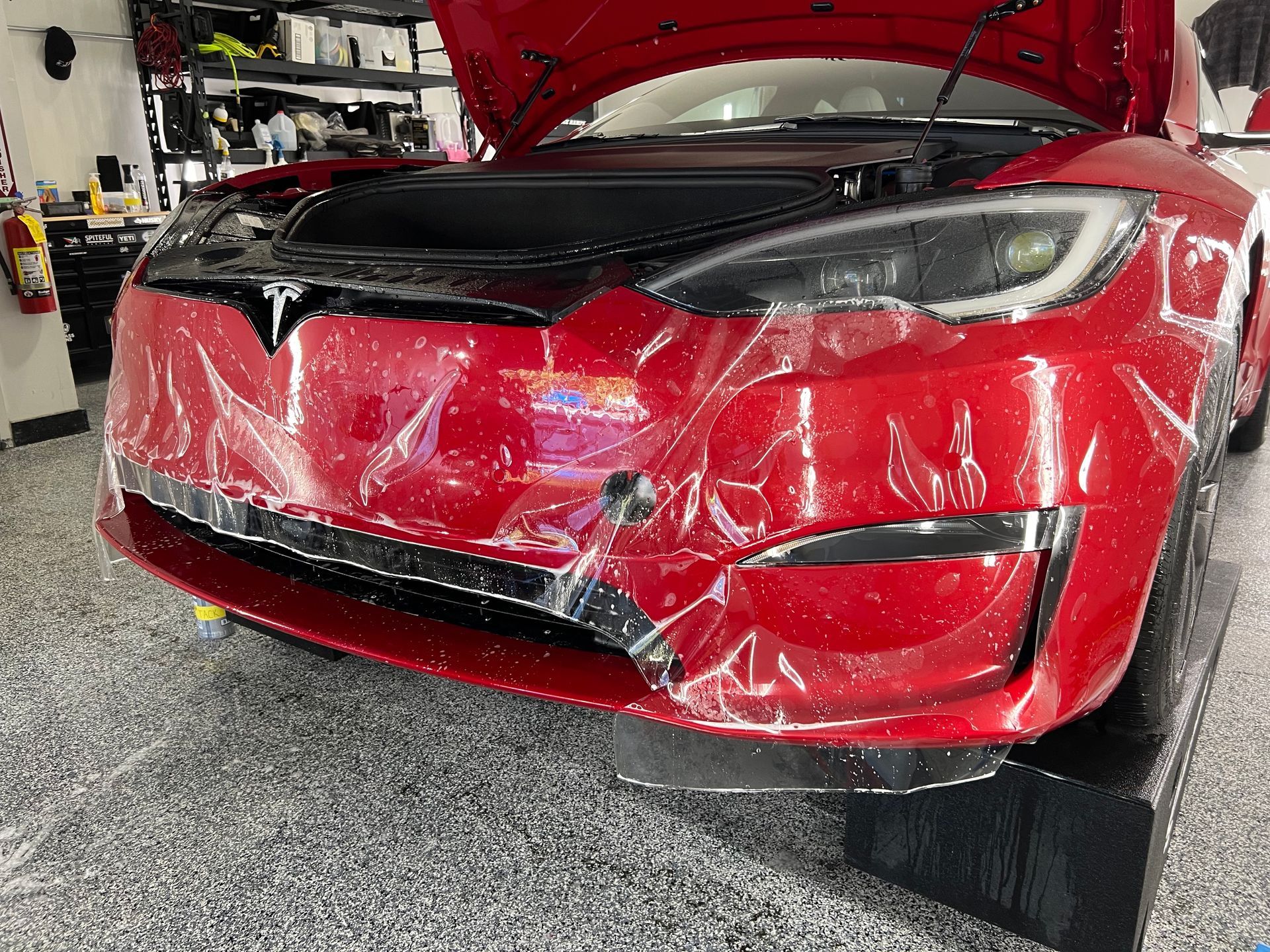
Choosing the Right PPF Installer in the South Jersey Area
When it comes to safeguarding your vehicle's exterior, Paint Protection Film (PPF) is a top choice for many. But, the effectiveness of PPF isn’t solely reliant on the quality of the film; the expertise of the installer plays a pivotal role. If you're in the South Jersey area and contemplating this protective addition, here's a guide to help you select the best PPF installer.
Reputation and Reviews: Begin by researching the reputation of potential installers. Online reviews, testimonials, and word-of-mouth recommendations can offer invaluable insights. A consistent track record of positive feedback is a good sign of a reliable installer.
Experience Matters: PPF application isn’t merely a process; it's an art. Experienced installers have honed their skills over numerous installations, ensuring a flawless application that fits the unique contours of each vehicle.
Quality of Materials: The best installers in the business are particular about the products they use. Ensure that the installer offers top-tier PPF brands, which guarantee durability, clarity, and protection.
Transparent Communication: A trustworthy installer won't shy away from answering your questions. They should be willing to guide you through the different PPF options, the application process, and post-installation care, ensuring you're well-informed every step of the way.
Facility Inspection: If possible, visit the installation facility. A clean, organized, and professional environment is indicative of an installer who takes their work seriously and prioritizes quality.
Customization and Tailoring: Vehicles come in a plethora of shapes and sizes. The right installer will ensure that the PPF is tailored to your specific vehicle, rather than adopting a one-size-fits-all approach.
Aftercare Support: PPF installation doesn't end when you drive off. Opt for an installer who provides guidance on aftercare, ensuring the longevity and efficacy of the film. Some even offer warranties or guarantees, underscoring their commitment to quality.
Pricing and Value: While it might be tempting to go for the cheapest option, remember that with PPF installation, you often get what you pay for. Instead of just looking at the price, focus on the value offered – quality of material, installer expertise, and aftercare support.
Local Insights: In areas like South Jersey, with its specific environmental conditions, an installer with local experience will have a better understanding of the challenges your vehicle might face, allowing them to recommend the best protection solutions.
In the realm of automotive care, especially something as crucial as PPF, making the right choice is paramount. By considering these factors, residents in the South Jersey area can ensure their vehicles are not only protected but also receive the expert touch they deserve.
